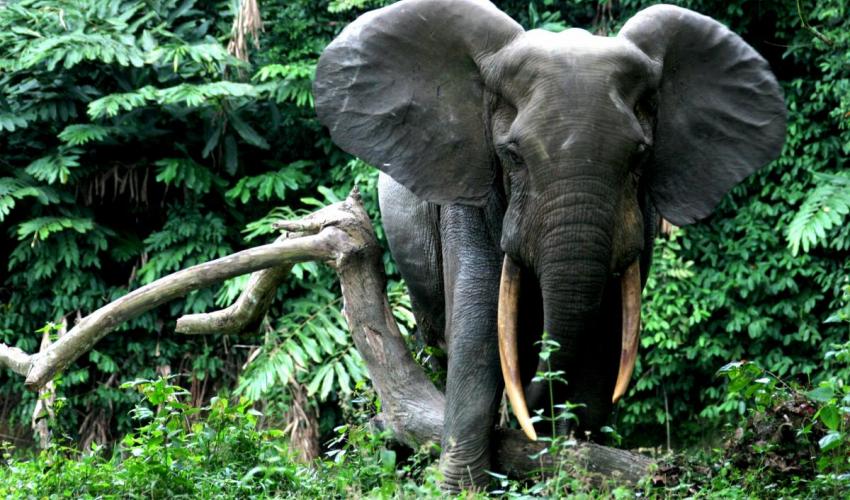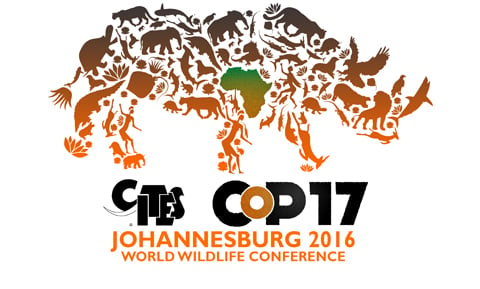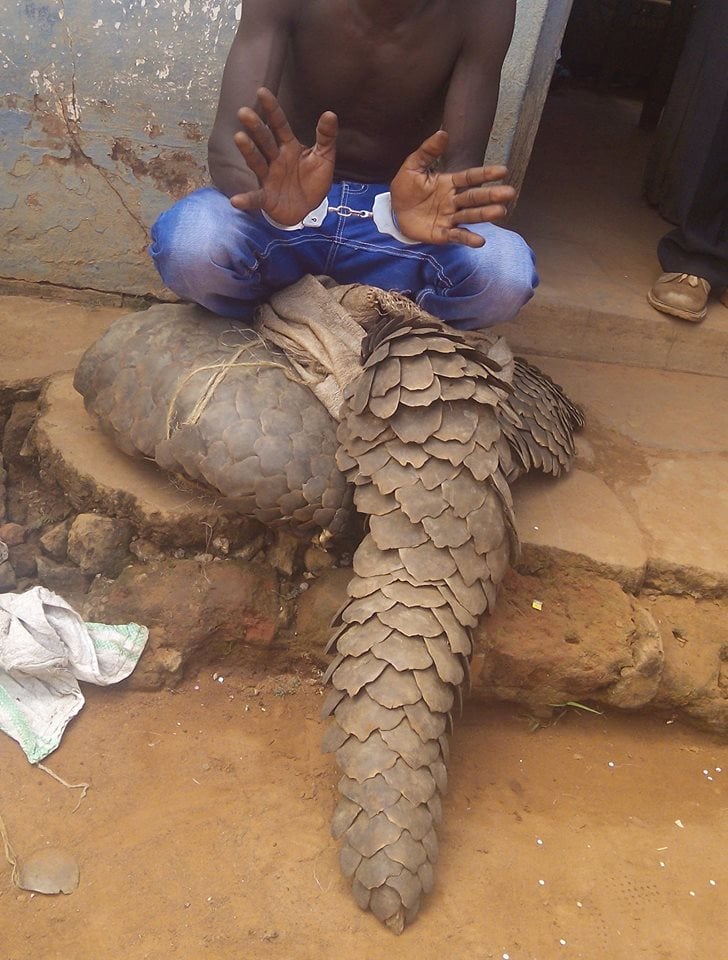A non-binding call for the closure of all domestic ivory markets has been endorsed by delegates at the United Nations Conference on Trade in Endangered Species (CITES).
The global conservation community has lauded the agreement, arguing that it is giant step to halt the growing elephant poaching challenge.
Over fifty elephants were killed a day between 2002 and 2011 in the Central African forests, according to the Wildlife Conservation Society (WCS).

Forest elephant along a river conkouati douli National park in the Republic of Congo. Photo credit/Hilde Vanleeuwe
This closure of domestic markets which many blame for the growing trade may go a long way to halt the elephant poaching crisis in the world’s second largest rain forest – the Congo Basin.
What are the main conclusions of the conference?
The triennial two-week summit of the Convention on International Trade in Endangered Species of Wild Fauna and Flora (CITES) closed in Johannesburg, South Africa on Wednesday, October 04, 2016 with Secretary-General John E. Scanlon describing the 17th meeting of the Conference of the Parties (#CoP17) as “a game changer.
« It will be remembered as a point in history when the tide turned for ensuring the survival of our most vulnerable wildlife,” said Scanlon
The CITES #CoP17 was the largest ever meeting of its kind with 152 governments taking decisions on 62 species-listing proposals submitted by 64 countries. In total, over 3,500 people attended the meeting, which also recorded the highest number of side events and intense media interest from every region of the world.
The Johannesburg meeting ended a day early, with high levels of consensus and a focus on implementing decisions on the ground. The outgoing Standing Committee Chair, Øystein Størkersen described CITES as an exceptional model for how to give expression to international agreements.
John E. Scanlon, CITES Secretary-General said: “#CoP17 adopted decisions that saw wildlife firmly embedded in the agendas of global enforcement, development and financing agencies that have the capacity and technical expertise to help ensure implementation of the Convention on the front lines, where it matters most – with the CITES management and scientific authorities, as well as customs officials, rural communities, businesses, police, prosecutors and park rangers.
“Notable successes included decisions to bring new marine and timber species under CITES trade controls, continuing a trend from CoP16 where countries turned to CITES to assist them along the path to sustainability in oceans and forests. It was not just the well-known species that were on the agenda, the pangolin and many lesser known species also came under the spotlight.”
Erik Solheim, Executive Director of the United Nations Environment Programme, who attended the opening of #CoP17, said: “Protection of endangered species is paramount when it comes to preserving our natural heritage. The CITES conference saw a strong desire from countries to ensure that we are mounting a defense for plants and animals, big and small. Illegal trade of everything from the helmeted hornbill to the hundreds of species of rosewood severely damages our planet, and it’s only through the international cooperation we’ve seen under CITES that we can prevent it.”
The Johannesburg conference was marked by agreement on measures to improve sustainable trade in a number of species, including the queen conch, humphead wrasse, sharks, snakes and African wild dog as well as a large range of timber species, such as bubinga and rosewoods, and the African cherry and agarwood.
Parties also recognized several conservation success stories, including that of the Cape mountain zebra, several species of crocodiles and the wood bison, which were all by consensus downlisted from Appendix I under CITES to Appendix II in recognition of their improved conservation status.
There was fresh impetus to further safeguard threatened wild animals and plants with added protection for the African grey parrot, Barbary Macaque, Blaine’s fishhook cactus, elephant, pangolin and saiga antelope; and well-targeted enforcement measures agreed to combat illegal trade for specific species. These included the African grey parrot, African lion, cheetah, helmeted hornbill, pangolin, rhino and totoaba.

There was fresh impetus to further safeguard threatened wild animals and plants with added protection for the African grey parrot, Barbary Macaque, Blaine’s fishhook cactus, elephant, pangolin and saiga antelope. Photo credit EAGLE
Multiple new animals and plants were also added to CITES Appendices for the first time, and hence will come under CITES trade controls. These decisions affect a large number of mammals, marine and timber species as well as many reptiles and amphibians and include more than 350 species of rosewood, devil rays, silky sharks and thresher sharks.
“CITES is now seen as an indispensible tool for achieving the Agenda 2030 and Sustainable Development Goals,” observed Scanlon who also thanked South Africa’s Minister of Environmental Affairs, Dr Edna Molewa for hosting the Ministerial meeting on the topic of CITES and the Sustainable Development Goals.
#CoP17 saw a number of firsts, including, the first ever:
- Resolution on corruption and wildlife crime;
- Decisions on cybercrime and wildlife crime;
- Resolution on strategies to reduce the demand for illegally traded wildlife;
- Resolutions affecting the helmeted hornbill and snakes;
- Decisions on targeting the illegal fishing of and trade in totoaba, and the related illegal killing of the vaquita;
- Resolution and decisions on youth engagement in CITES; and
- Decisions on rural communities engagement, providing a greater voice for local people in managing wildlife.
It was also the first meeting where the European Union was participating, and voting, as a Party to the Convention.
Some other notable outcomes include:
- The rejection of a Decision-Making Mechanism (DMM) for a future trade in ivory;
- An agreement to close domestic markets in ivory where they contribute to poaching or illegal trade;
- The rejection of all proposals to change the protection of Southern African elephant populations;
- Stricter monitoring and regulation of hunting trophies to bring them under trade control measures, including recommending conservation benefits and incentives for people to conserve wildlife;
- A decision to conduct a study to improve knowledge on regulation of trade in the European eel, and to look more broadly at all Anguilla eels;
- An agreement to undertake specific work on marine turtles to understand the impact of international trade on their conservation status;
- The introduction of a captive breeding compliance process to check the authenticity of specimens described as captive bred;
- Acceptance of the National Ivory Action Plans as a tool for those Parties mostly affected by illegal trade in ivory, including source, transit and destination countries, to build their capacity in addressing illegal trade and ensuring compliance with the commitments they make under the plans;
- A decision to undertake studies in legal and illegal trade in lion bones and other parts and derivatives;
- A request to review all species listed on Appendix I to identify what measures are needed to improve their conservation status;
- Improvements to processes to ensure that wildlife trade is sustainable, legal and traceable; and
- Agreements on process to improve traceability and identification of CITES-listed species.
Changes to the CITES Appendices, Resolutions and Decisions enter into force 90 days after the CoP.
“It was here in Johannesburg that rural community voices and the voice of the world’s youth came into the heart of the meeting room to be heard by decision makers from across the world. It has been a truly wonderful CoP from every perspective for which we extend our deepest gratitude to the Government and the people of South Africa,” concluded Scanlon.
The 17th Meeting of the Conference of the Parties to the Convention was held from 24 September to 4 October 2016. It was attended by over 2,500 participants from governments and numerous observer organizations. COP18 will be held in 2019 in Sri Lanka.
